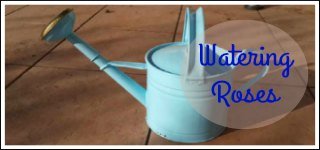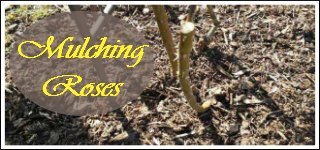Planting Roses
Choose an area, dig a hole, plant your roses and enjoy the beauty of the queen of the flowers

Planting roses is almost that easy.
Whether in the garden or in a pot on the terrace: if the roots of a rose princess feel good and can spread from the start, it will be the beginning of a long, blooming regency. The precursors are a thorough soil preparation and a careful planting.
The planting season for bare root roses ranges from mid-October to April.
Properly speaking, the best time is the fall, because the roses can still take roots before the winter starts and will bloom earlier than the ones planted in the spring.
What Is Important When Planting Roses
A good start into a new rose’s life begins with the choice of the right location. The less a location matches to the requirements of a rose, the more likely the plants will get problems with diseases.
If you have never planted a rose before, continue reading with some essential recommendations for planting roses.

Guide Through Planting Roses
On this Page
You should also read…
Forward-looking planning helps to make optimal use of the location conditions. At planting time in the spring, a garden always looks bigger than he is. This often leads to planting with too narrow plant spacing.
Mark the future site for your roses in summer and observe the environmental conditions, such as sunshine or shadow for a longer period.
The Sunlight
The importance of a sunny area for your plants in the garden cannot be stressed enough. Although several varieties will grow very well at slightly shaded places, most of them prefer at least 6 hours of sun each day.
The result of insufficient sunlight will be fewer leaves, buds and blossoms. The rose will struggle to grow properly, and the door will be wide open to diseases and pests. The plants prefer morning sun and light afternoon shades during the hottest part of the summer.
Don’t step into the trap and mix up sun with heat. Hot sun in front of walls causes stress to the plants, which will result in diseases and pests too. The planting site should be slightly aerated, to avoid hot spots.
The Wind
The other side of the coin is the wind. If you are in a particularly windy area, a planting site in front of walls and fences is perfect to give some shelter.
The flowers will not grow well in cold, drafty areas. The very reverse will occur – they will wither and maybe die.
Some protection from strong winds and storms is desirable as it reduces damage to the roses.
Tip
Avoid to plant roses at sites where roses already grew,or exchange the soil down to 30 inches. Otherwise you will get poor growing results
The Soil
Roses are deep-rooting plants and sometimes grow as deep as 5 feet. They prefer deep-soil, which should be humic and sandy-loamy. Compacted soil layers sometimes cause soil wetness and the plants will show puny growth.
A good idea to prevent soil wetness is to plant your roses in raised beds.
Although a fertile soil is highly desirable, in most gardens the soil conditions are not necessarily ideal.
The good news is, soil can be improved with the addition of organic soil amendments.











New! Comments
Have your say about what you just read! Leave me a comment in the box below.